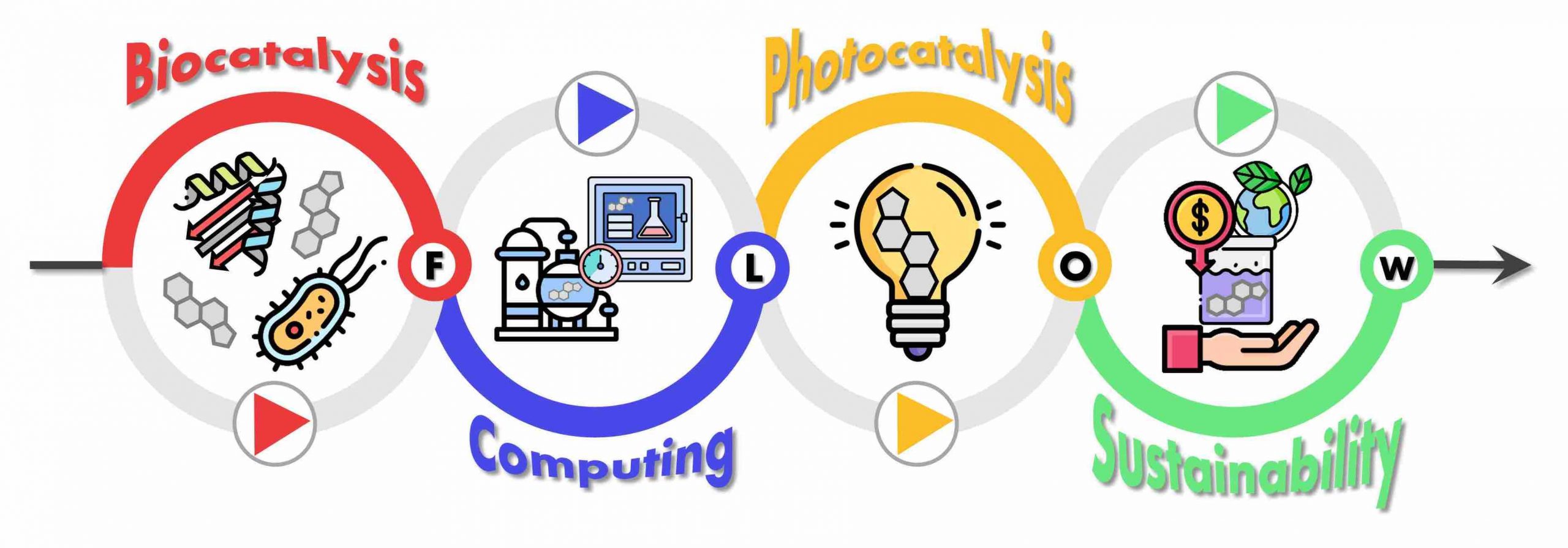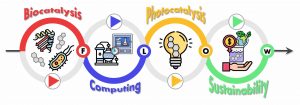
May 2023: Improving steroid synthesis by merging continuous flow technology, photochemistry and biocatalysis
‘Very Important Publication’ in Advanced Synthesis & Catalysis
We present a review in Advanced Synthesis & Catalysis by Elena Tomarelli et al., our joined PhD student between the University of Amsterdam and the University of Perugia. The review describes methods to enable more efficient synthesis of structurally diverse steroids, and showcases recent progresses enabled by continuous flow chemistry and its integration with biocatalysis, photochemistry, and automation. This was a joint effort with Bruno Cerra and Antimo Gioiello from the laboratory of Medicinal and Advanced Synthetic Chemistry of the University of Perugia. The paper has been designated as a ‘Very Important Publication’ by the editors of the journal.
Image: HIMS-Biocat and Lab-MASC
Abstract
Since their structural elucidation in 1935, the introduction and substitution of functional groups and the modification of the steroidal scaffolds have been a fertile ground of research for synthetic and medicinal chemists. The discovery of steroids with hormonal and pharmacological activity has stimulated tremendous efforts to the development of highly selective and efficient synthetic procedures. Despite the progress made, steroid chemistry remains challenging and the preparation of steroidal compounds of pharmaceutical interests and in clinical practice, often requires long and elaborated synthesis.
In recent years, a new impetus in the field came with the advent of enabling chemical technologies, such as continuous flow chemistry, which are exploited to overcome problems that arise from batch synthesis. Although it is still a niche sector, the use of flow technology in steroid synthesis and functionalization holds the premise to empower methodology development and to provide innovative tactics also for many hitherto uncharted chemistries.
In this review, scientific contributions are reported and discussed in terms of flow set-up and advantages offered concerning process efficiency, optimization, waste minimization, safety improvement, easy scale-up and costs. We also highlight the main challenges, key improvements and the future trajectory in the application of continuous flow chemistry and its implementation to different disciplines such as photochemistry and biocatalysis with the ultimate goal of streamlining steroid synthesis.
Paper details
Elena Tomarelli, Bruno Cerra, Francesco G. Mutti, Antimo Gioiello: Merging Continuous Flow Technology, Photochemistry and Biocatalysis to Streamline Steroid Synthesis. Adv.Synth.Catal, First published: 16 May 2023. DOI: 10.1002/adsc.202300305



